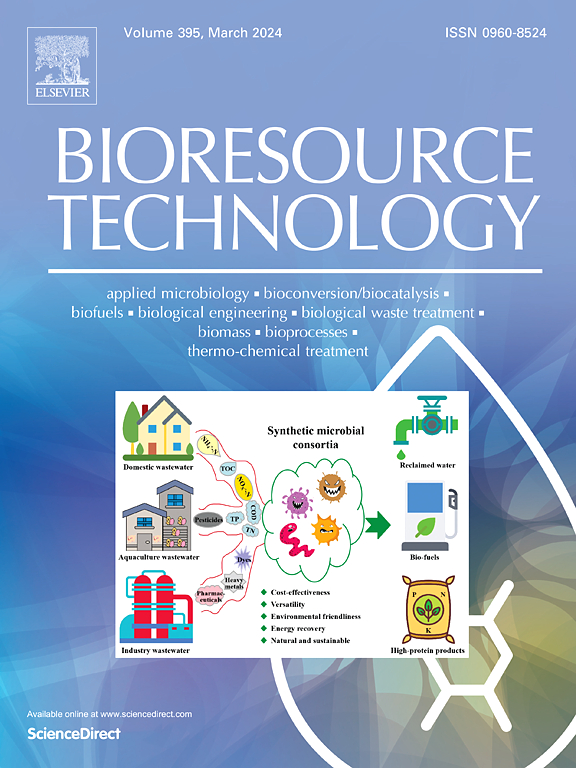Towards valorization of glycerol and molasses: Carbon-based catalysts from molasses for the synthesis of acetins
IF 9
1区 环境科学与生态学
Q1 AGRICULTURAL ENGINEERING
引用次数: 0
Abstract
Crude sugarcane molasses (SCM) was successfully applied for the first time as a bio-feedstock for producing biochar catalysts for glycerol upgrading. Preparation methods were developed, including partial or hydrothermal carbonization (abbr. PC and HTC) and chemical activation. After functionalization with −SO3H groups, the catalysts were tested for the esterification of glycerol to acetins. The materials varied in their textural and chemical features, particularly in the −SO3H content, giving the single-step PC method a distinct advantage. The best catalyst yielded approximately 74 % of di- and tri-acetins with 97 % glycerol conversion within only 2 h of the reaction and demonstrated great stability over three consecutive cycles. The formation of the desired TA product was correlated with the concentration of −SO3H groups. Despite being non-porous, the most active PC catalyst possessed a compact structure with a high abundance and easy accessibility of −SO3H, –COOH, and –OH groups on its surface.
实现甘油和糖蜜的价值化:利用糖蜜中的碳基催化剂合成乙炔。
粗甘蔗糖蜜(SCM)首次被成功用作生产生物炭催化剂的生物原料,用于甘油提纯。制备方法包括部分碳化或水热碳化(PC 和 HTC)和化学活化。在用 -SO3H 团进行官能化后,对催化剂进行了测试,以将甘油酯化为乙炔。这些材料的质地和化学特征各不相同,尤其是 -SO3H 含量,因此单步 PC 法具有明显的优势。最好的催化剂仅在反应 2 小时内就生成了约 74% 的二乙炔和三乙炔,甘油转化率达 97%,并在连续三个循环中表现出极高的稳定性。所需 TA 产物的形成与 -SO3H 基团的浓度有关。最活跃的 PC 催化剂虽然无孔,但结构紧凑,表面上的 -SO3H、COOH 和 -OH 基团丰富且易于接近。
本文章由计算机程序翻译,如有差异,请以英文原文为准。
求助全文
约1分钟内获得全文
求助全文
来源期刊

Bioresource Technology
工程技术-能源与燃料
CiteScore
20.80
自引率
19.30%
发文量
2013
审稿时长
12 days
期刊介绍:
Bioresource Technology publishes original articles, review articles, case studies, and short communications covering the fundamentals, applications, and management of bioresource technology. The journal seeks to advance and disseminate knowledge across various areas related to biomass, biological waste treatment, bioenergy, biotransformations, bioresource systems analysis, and associated conversion or production technologies.
Topics include:
• Biofuels: liquid and gaseous biofuels production, modeling and economics
• Bioprocesses and bioproducts: biocatalysis and fermentations
• Biomass and feedstocks utilization: bioconversion of agro-industrial residues
• Environmental protection: biological waste treatment
• Thermochemical conversion of biomass: combustion, pyrolysis, gasification, catalysis.
 求助内容:
求助内容: 应助结果提醒方式:
应助结果提醒方式:


